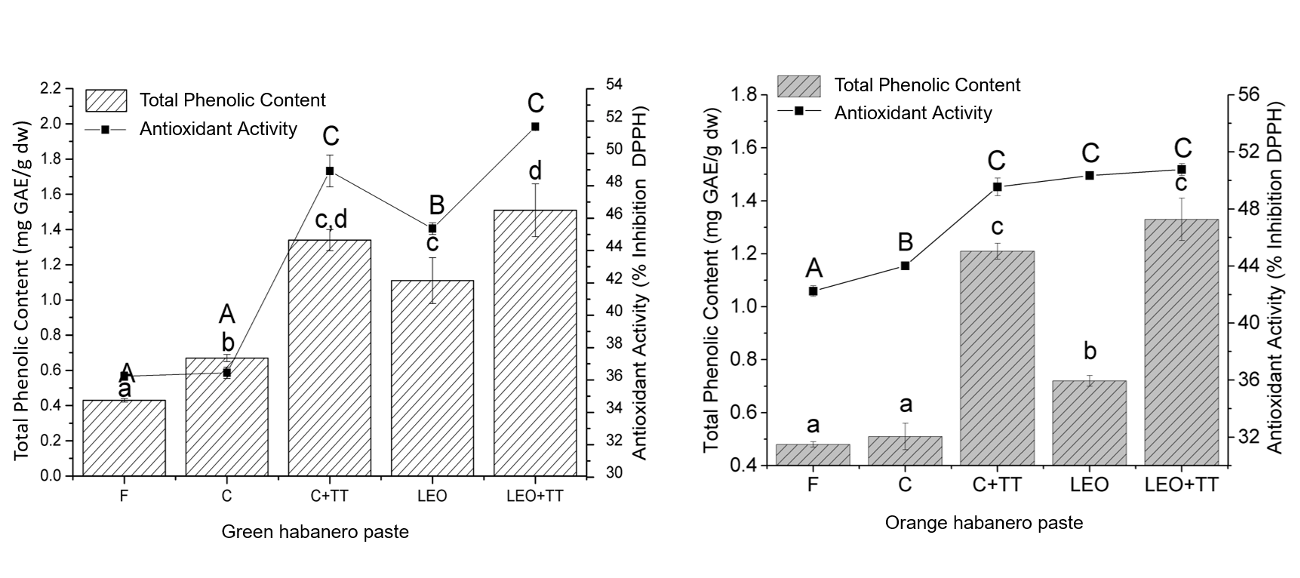 |
|
Physicochemical and rheological properties, total phenolic content (TPC), capsaicinoids identification and quantification, antioxidant activity (AA) and sensorial analysis were determined on two ripening stages of habanero (Capsicum chinense Jacq.) pepper pastes added with lemon essential oil (LEO) as natural preservative and subjected to thermal process. Rheological parameters indicated that habanero chili pastes with orange ripening stage and thermal processing presented the higher consistency coefficient, flow index, and viscoelastic (G´ and G´´) behavior values. The addition of LEO favored the increment of TPC and AA, as well as color preservation. Thermal processing potentiated total capsaicinoid content (TCC), TPC, and AA, but affected the color characteristics. The combination of LEO and thermal processing significantly affect the sensorial attributes in two of the three sensorial tests performed. These results suggested that apart from sensorial perception, the natural preservative LEO and the thermal processing improved physicochemical and rheological properties as well as biological activity of habanero pastes of the two ripening stage increasing habanero pepper quality and marketing possibilities.
Keywords: Capsicum chinense Jacq., viscoelasticity, lemon essential oil, capsaicin, antioxidant activity.
|
|
 |

